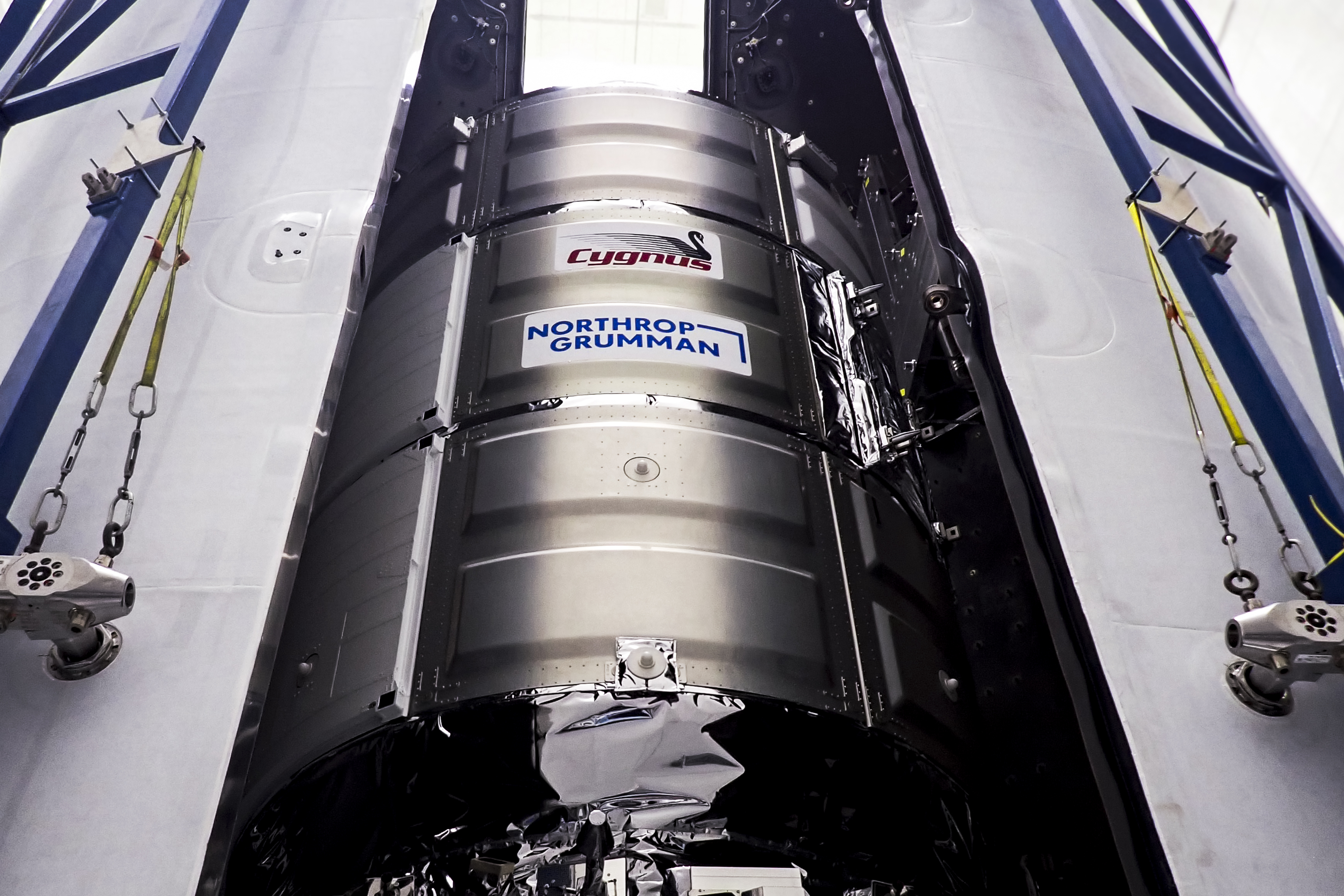Northrop Grumman’s Cygnus spacecraft completed the deployment of its two solar arrays at 2:21 p.m. EDT after launching at 11:02 a.m. Aug. 4 on a SpaceX Falcon 9 rocket from Space Launch Complex 40 at Cape Canaveral Space Force Station in Florida to the International Space Station for NASA.
Shortly after launch, the spacecraft missed its first burn slated for 11:44 a.m. due to a late entry to burn sequencing. Known as the targeted altitude burn, or TB1, it was rescheduled for 12:34 p.m., but aborted the maneuver shortly after the engine ignited due to a slightly low initial pressure state. There is no indication the engine itself has any problem at this time.
Cygnus is at a safe altitude, and Northrop Grumman engineers are working a new burn and trajectory plan. The team aims to achieve the spacecraft’s original capture time on station, which is currently slated for 3:10 a.m. on Tuesday, Aug. 6.
If all remains on track, NASA will provide live coverage of the spacecraft’s arrival beginning at 1:30 a.m. Aug. 6 on NASA+, NASA Television, the NASA app, YouTube, X, Facebook, and the agency’s website. Additional updates will be posted as needed.
NASA astronaut Matthew Dominick will capture Cygnus using the station’s Canadarm2 robotic arm at approximately 3:10 a.m., and NASA astronaut Jeanette Epps is backup. After capture, the spacecraft will be installed on the Unity module’s Earth-facing port.
This is Northrop Grumman’s 21st commercial resupply mission for NASA.
Learn more about station activities by following @space_station and @ISS_Research on X as well as the ISS Facebook and ISS Instagram accounts.


